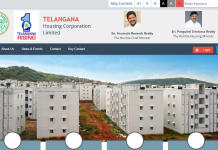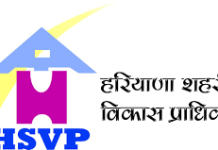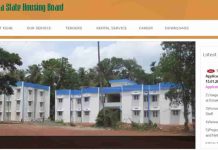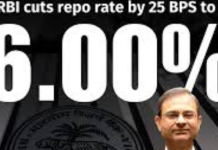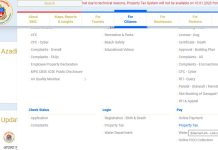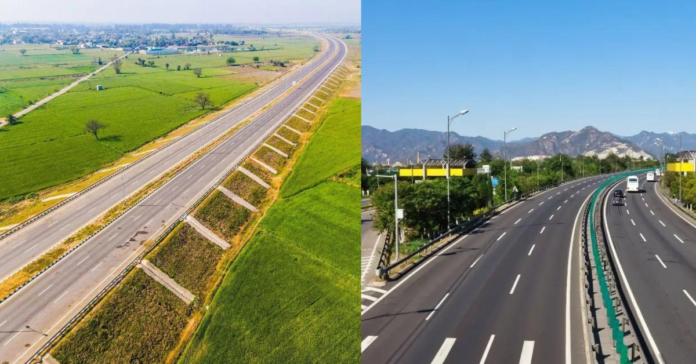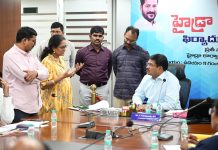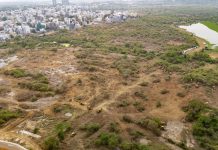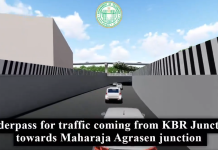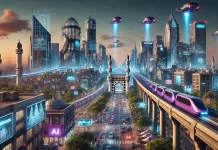Introduction
The Varanasi Ranchi Kolkata Expressway is an ambitious infrastructure project set to transform connectivity in eastern India. Stretching across three major cities, this expressway aims to significantly reduce travel time, enhance trade, and boost economic growth in the region. In this article, we delve into the route, cost, latest updates, distance, and other key aspects of the Varanasi Ranchi Kolkata Expressway.
Route and Distance
The Varanasi Ranchi Kolkata Expressway will connect three critical urban centers: Varanasi in Uttar Pradesh, Ranchi in Jharkhand, and Kolkata in West Bengal. The expressway will span approximately 610 kilometers, providing a direct and efficient route between these cities.
The Varanasi Ranchi Kolkata Expressway will connect three critical urban centers: Varanasi in Uttar Pradesh, Ranchi in Jharkhand, and Kolkata in West Bengal. The expressway will span approximately 610 kilometers, providing a direct and efficient route between these cities.
Varanasi-Ranchi-Kolkata Expressway: Status and Progress
The Varanasi Ranchi Kolkata Expressway project is making significant strides as it advances through its developmental phases. Here’s an update on the current status:
Land Acquisition
- Total Area: Approximately 1,340 hectares of land are required for the expressway.
- Progress: The detailed project report has been finalized and approved. Land acquisition has commenced in specific areas, with ongoing efforts to secure additional parcels.
- Government Initiatives: The government is currently soliciting bids for construction activities in various sections of the expressway.
Construction Work
- Start Date: Construction is slated to begin in the first week of November.
- Contractors: NKS Projects Private Limited (Gurgaon) and PNC Infratech Private Limited (Agra) have been selected for the project.
- Scope of Work: These contractors will be responsible for:
- Constructing 90 km of roadway in Chandauli, Kaimur, and Rohtas.
- Building six flyovers, four major interchanges, 44 underpasses, three toll plazas, 28 small bridges, and minor bridges.
Financial and Traffic Details
- Land Acquisition Cost: The government has invested Rs 338 crore in acquiring land across 89 villages in three districts along the expressway route.
- Vehicle Speed Limit: An average speed of 100 km/h has been established for vehicles traveling on the expressway.
The Varanasi-Ranchi-Kolkata Expressway is poised to enhance regional connectivity significantly, offering a faster and more efficient travel route across eastern India
Varanasi Ranchi Kolkata Expressway Overview
| Feature | Details |
|---|---|
| Total Length | Approx. 610 km |
| States Covered | Uttar Pradesh, Bihar, Jharkhand, West Bengal |
| Parallel Route | National Highway 2 (NH 2) |
| Right of Way (RoW) | 100 meters |
| Key Tunnel | 5 km tunnel in Kaimur District, Bihar |
Route Breakdown by State
| State | Length | Key Districts Covered |
|---|---|---|
| Uttar Pradesh | 22 km | Varanasi (Starting from Varanasi Ring Road, Barhuli Village) |
| Bihar | 159 km | Kaimur, Rohtas, Aurangabad, Gaya |
| Jharkhand | 187 km | Chatra, Hazaribagh, Ramgarh, Peterbar, Bokaro (near Ranchi) |
| West Bengal | 242 km | Purulia, Bankura, Arambagh, Uluberia (ending at NH 19 near Howrah) |
Also read: Hyderabad Amaravati Expressway: Latest news and Project details 2024
Varanasi Ranchi Kolkata Expressway Route
The access-controlled Varanasi Ranchi Kolkata Expressway is set to traverse four major states: Uttar Pradesh, Bihar, Jharkhand, and West Bengal. Running parallel to the old National Highway 2, this expressway aims to enhance connectivity and reduce travel time significantly.
Key Features of the Varanasi Ranchi Kolkata Expressway Route:
- Right of Way: A width of 100 meters will be maintained along the expressway.
- Tunnel in Bihar: A 5 km tunnel will be constructed in the Kaimur District of Bihar.
- Route Length by State:
- Uttar Pradesh: Approximately 22 km
- Bihar: Approximately 159 km
- Jharkhand: Approximately 187 km
- West Bengal: Approximately 242 km
Varanasi Ranchi Kolkata Expressway – Districts Covered
Uttar Pradesh:
The expressway will commence from the Varanasi Ring Road in Barhuli Village, located near Chandauli District. It will then cross the state border into Bihar.
Bihar:
In Bihar, the expressway will pass through several key cities, including:
- Kaimur
- Rohtas
- Aurangabad
- Gaya
After traversing these cities, it will enter the state of Jharkhand.
Jharkhand:
In Jharkhand, the expressway will cover the following regions:
- Chatra
- Hazaribagh
- Ramgarh
- Peterbar
Additionally, Route: The expressway will pass through Bokaro near Ranchi, before proceeding into West Bengal..
West Bengal:
In West Bengal, the expressway will traverse:
- Purulia
- Bankura
- Arambagh
The expressway will culminate at NH 19 in the Uluberia region, which is near Howrah (Kolkata).
This strategic expressway will play a crucial role in boosting regional development, facilitating smoother trade routes, and providing a faster travel alternative, thereby contributing to the overall economic growth of the regions it cover
Also read: Delhi-Mumbai Expressway 2024: Everything You Need to Know About India’s Mega Road Project
Varanasi Ranchi Kolkata Expressway – Travel Time
The current distance between Varanasi and Kolkata is approximately 690 km, taking about 12 to 14 hours of travel time.
Upon the completion of the Varanasi Ranchi Kolkata Expressway, this travel time is expected to be reduced by about 50%.
With the expressway, the new travel time between these cities will be around 6 to 7 hours, significantly saving both time and fuel.
Sections of the Varanasi Ranchi Kolkata Expressway
The Varanasi Ranchi Kolkata Expressway is divided into five key sections:
Section 1
- Route: Begins at Barhuli near Varanasi and ends at Rampur in Buxar District, Bihar.
- Length: Approximately 74 km.
Section 2
- Route: Stretches from Rampur to Tetahar Village.
- Length: Around 40 km.
Section 3
- Route: Extends from Tetahar Village to Shahpur in Gaya District, Bihar.
- Length: About 70 km.
Section 4
- Route: Extends from Shahpur to Kamalpur.
- Length: Approximately 191 km.
Section 5
- Route: Starts at Kamalpur and ends at Uluberia near Kolkata.
- Length: Around 237 km.covers
Varanasi Ranchi Kolkata Expressway Cost
The estimated cost of the Varanasi Ranchi Kolkata Expressway exceeds Rs 35,000 Crores. This is divided into two main segments:
- Construction Cost: Estimated at Rs 25,000 Crores.
- Land Acquisition Cost: Estimated at Rs 10,000 Crores.
Timeline of the Varanasi-Kolkata Expressway Project:
| S. No | Month and Year | Details |
|---|---|---|
| 1 | 2019 | The proposal for the Varanasi Kolkata Expressway was introduced to the Ministry of Road Transport and Highways (MoRTH). |
| 2 | November 2022 | The National Highway Authority of India (NHAI) issued tenders for the expressway project. |
| 3 | January 2023 | The process for acquiring land necessary for the expressway began. |
| 4 | March 2023 | – A total of 15 bidders showed interest in constructing the 8 designated packages. <br> – 11 bidders were involved in the bidding for the Jharkhand-West Bengal border segment. |
| 5 | April 2023 | The bidding for the Jharkhand section concluded and the land acquisition phase commenced. |
| 6 | July 2023 | The expressway was officially designated as National Highway 319B by the National Highway Authority of India (NHAI). |
| 7 | February 2024 | Prime Minister Narendra Modi laid the foundation stone for the expressway. |
| 8 | March 2024 | Compensation camps were set up in thirty villages of Bokaro to facilitate land acquisition. |
Varanasi-Ranchi-Kolkata Expressway : Route Map

source: themetrorailguy
Benefits of the Varanasi-Ranchi-Kolkata Expressway
1. Significant Reduction in Travel Time
The Varanasi-Ranchi-Kolkata Expressway will dramatically cut travel time between Varanasi and Kolkata from approximately 14-16 hours to just about 8 hours. This reduction in travel time will enhance efficiency for both personal travel and commercial transportation.
2. Economic Growth and Trade Enhancement
- Improved Trade Routes: By providing a direct and efficient route between major economic centers, the expressway will facilitate smoother and faster movement of goods. This improvement will boost trade and commerce in the region, contributing to economic growth.
- Industrial Development: The expressway is likely to attract industrial investments along its route, leading to the development of new industrial hubs and economic zones.
3. Job Creation and Economic Opportunities
- Construction Phase Jobs: The construction of the expressway will create numerous job opportunities, both directly and indirectly, during the various phases of the project.
- Ongoing Employment: The maintenance and operation of the expressway will continue to provide employment opportunities, including in toll collection, service stations, and safety monitoring.
4. Tourism Boost
- Enhanced Accessibility: Improved connectivity will make it easier for tourists to visit cultural and historical sites in Varanasi, the natural attractions in Ranchi, and the vibrant city of Kolkata.
- Tourism Infrastructure: With the expected increase in tourist traffic, there will likely be growth in tourism infrastructure, such as hotels, restaurants, and local transport services.
5. Improved Safety and Comfort
- Modern Infrastructure: The expressway will feature advanced safety measures, including crash barriers, CCTV surveillance, and emergency response services, enhancing the safety of travelers.
- Comfortable Travel: Rest areas and service stations equipped with amenities such as food courts, restrooms, and fuel stations will ensure a comfortable travel experience.
6. Environmental Benefits
- Reduced Emissions: By providing a more direct route and reducing travel time, the expressway will help in reducing vehicle emissions, contributing to lower levels of air pollution.
- Sustainable Practices: The project incorporates sustainable construction practices and environmental clearances to minimize its impact on the local ecosystem.
7. Better Connectivity and Regional Development
- Integrated Transportation Network: The expressway will integrate with other major highways and roads, improving overall connectivity in the region.
- Regional Development: Enhanced connectivity will spur regional development, making remote areas more accessible and promoting balanced regional growth.
8. Boost to Agriculture and Rural Economy
- Access to Markets: Farmers and rural producers will have better access to urban markets, enabling them to sell their products more efficiently and at better prices.
- Agricultural Growth: Improved transport infrastructure will facilitate the supply of agricultural inputs and the distribution of produce, contributing to agricultural growth.
9. Enhanced Quality of Life
- Access to Services: The expressway will improve access to essential services such as healthcare, education, and employment opportunities for people living in the region.
- Urban-Rural Linkages: Strengthening urban-rural linkages will lead to balanced development and improved living standards for rural communities.
10. Strategic Importance
- National Integration: The Varanasi-Ranchi-Kolkata Expressway will strengthen national integration by connecting key cultural, economic, and political centers in eastern India.
- Disaster Management: Enhanced connectivity will facilitate faster and more efficient disaster management and emergency response in the region.
In conclusion, the Varanasi-Ranchi-Kolkata Expressway is set to deliver a multitude of benefits, ranging from economic growth and job creation to improved safety, tourism, and overall quality of life. As a critical infrastructure project, it will play a pivotal role in transforming eastern India’s transportation landscape and driving regional development.
Frequently Asked Questions:
The Varanasi-Ranchi-Kolkata Expressway is a major infrastructure project aimed at improving connectivity across eastern India. Spanning approximately 610 kilometers, it connects Varanasi in Uttar Pradesh, Ranchi in Jharkhand, and Kolkata in West Bengal
The expressway covers about 610 kilometers, running parallel to the old National Highway 2. It traverses through four states: Uttar Pradesh (22 km), Bihar (159 km), Jharkhand (187 km), and West Bengal (242 km).
Currently, the journey between Varanasi and Kolkata takes about 12 to 14 hours. Upon completion, the expressway is expected to reduce travel time by 50%, cutting it down to approximately 6 to 7 hours.
The total estimated cost for the expressway is over Rs 35,000 Crores, with Rs 25,000 Crores allocated for construction and Rs 10,000 Crores for land acquisitio
Right of Way: Maintained at 100 meters.
Tunnel: A 5 km tunnel in Kaimur District, Bihar.
Major Sections: Divided into five sections, covering various key districts and regions.
Suggested Articles:
Delhi-Mumbai Expressway 2024: Everything You Need to Know About India’s Mega Road Project
Hyderabad Amaravati Expressway: Latest news and Project details 2024
Gorakhpur Link Expressway: Route map, phases & Latest updates






